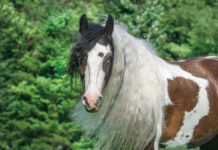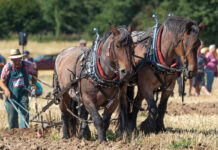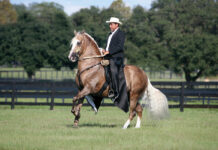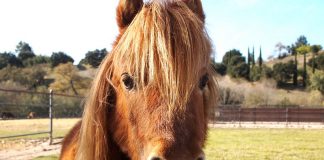It’s the late 1800s, and a caravan of brightly colored covered wagons moves slowly through the Irish countryside. The hand-carved detail on the ornate coaches are surpassed in beauty only by the equines that pull them. The nomadic people known as the Travelers or Roma from the United Kingdom walked alongside their wagons to help ease the burden for their cherished horses. These gypsy vanner horses pulled dutifully, long manes and tails blowing in the breeze, their feathered legs rippling with each step.
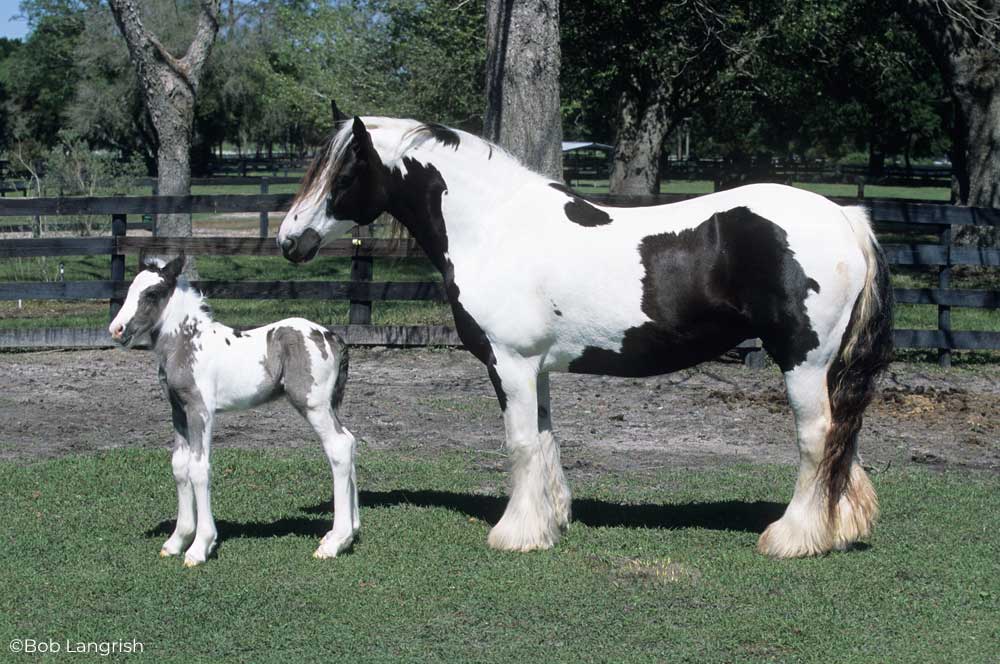
At night, the families would camp, turning their horses out to graze in nearby fields. During the day, they moved steadily onward in search of work on farms or toward towns and villages where they could sell their wares.
This was the life of Roma people throughout the last half of the 19th century and the beginning of the 20th century, before cars and mechanized farm machinery changed the way they lived. These days, it’s not unusual to find the Roma in England and Ireland living in permanent homes. Others continue their traveling lifestyle, but now they do it by car.
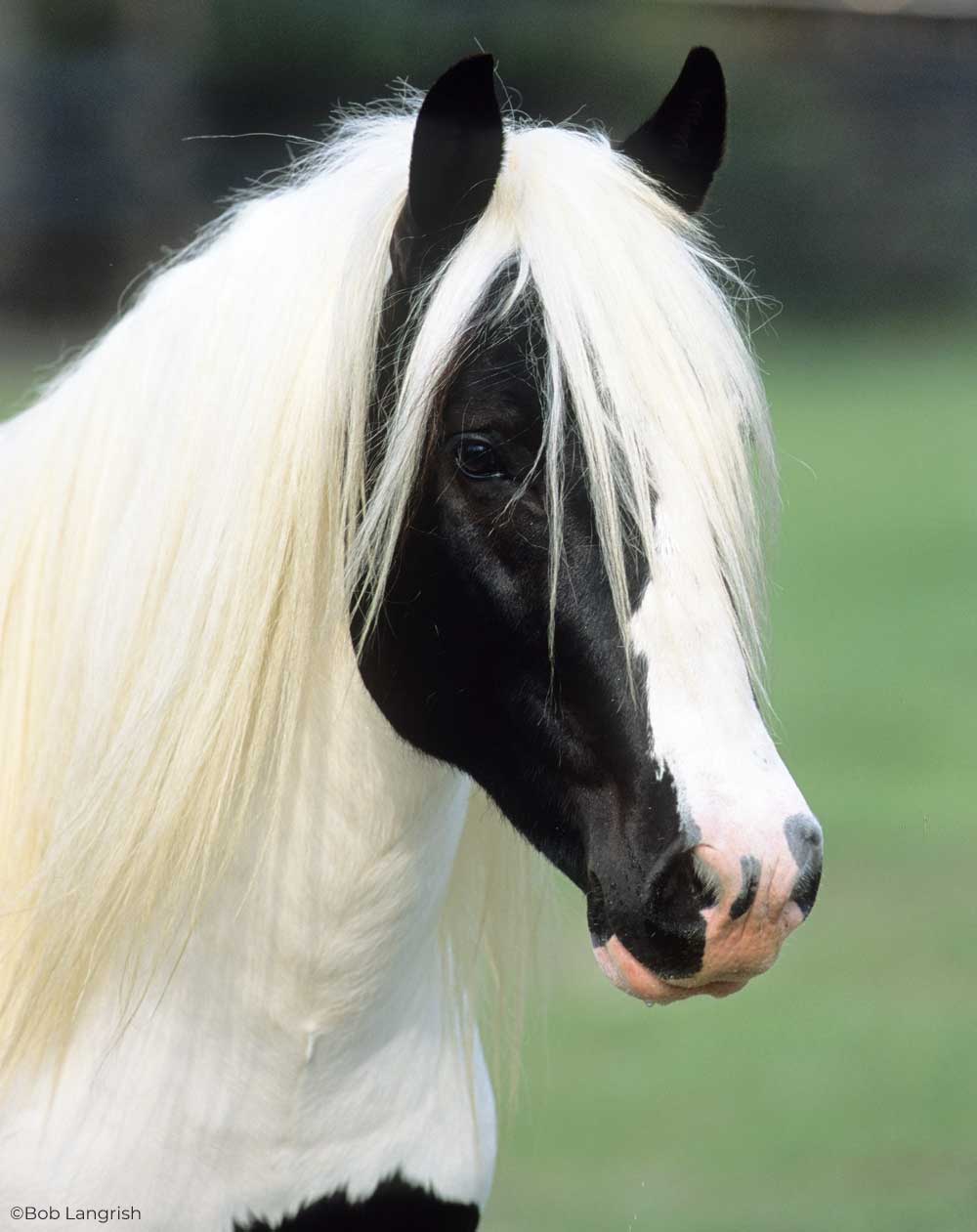
Even though times have changed, most Roma people still have a place in their hearts for these horses, including Gypsy Vanners, Gypsy Horses and Cobs. Many continue to keep these breeds, sometimes even hitching them to antique wagons in a celebration of the old way of life.
An Evolving Breed
No one knows for certain how the Gypsy breeds first came to be. The Roma people do not keep written records of horse pedigrees, using only word of mouth to keep track of the heritage of each horse.
Some believe Gypsy horses have been selectively bred for hundreds of years. Others contend that Roma communities only began breeding these horses deliberately in the 1940s. Either way, the breed type is distinct now and becoming more popular every year.
American Gypsy Breeds
Although Gypsy-bred horses were a common sight in the United Kingdom for decades, they didn’t make their way to the U.S. until the 1990s. It was in America that the Gypsy- bred horses began to garner their biggest fans.
There’s no doubt that the Gypsy horse—also known as the Gypsy Vanner and Gypsy Cob, depending on the registry—has a unique appearance that has gained it plenty of attention in the U.S. The striking coat colors along with their long, luxurious manes and tails are a perfect accent to the breed’s thickly feathered legs.
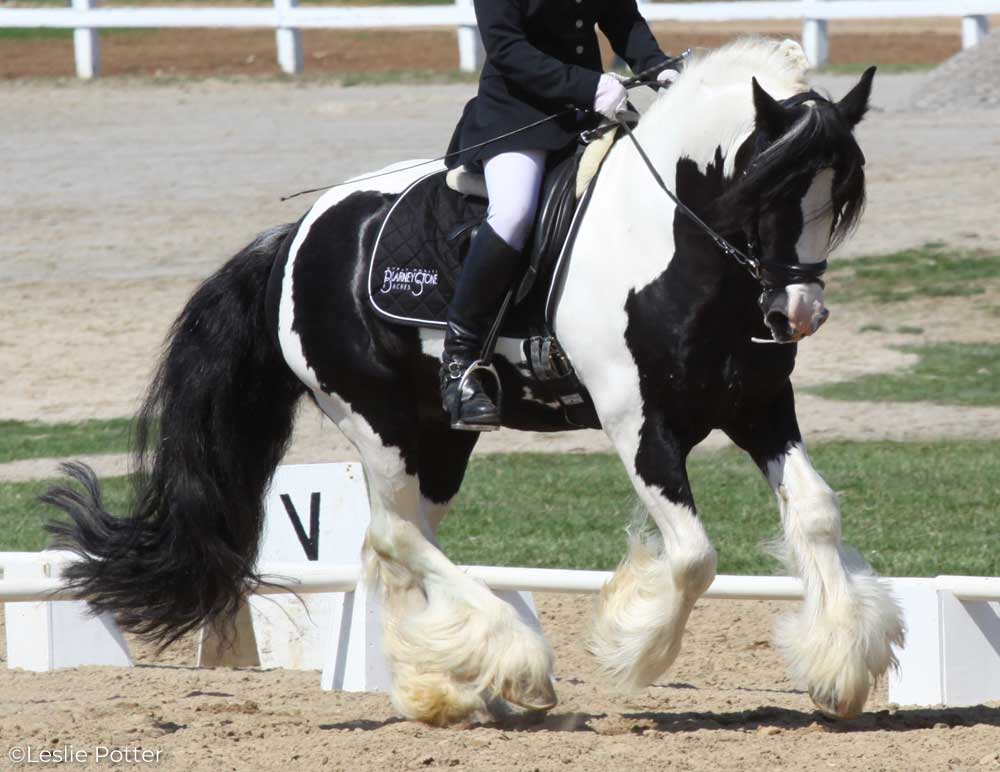
Owners of Gypsy horses use them for a variety of disciplines, including driving, dressage, competitive trail riding, western pleasure, parade work, and even equine-assisted therapy. Known for their tractable disposition, Gypsy Vanners, Cobs and Horses are suitable for just about any job that requires a strong, reliable horse.
Gypsy Horse Fast Facts
- Height: 13.2 to 16 hands
- Color: Any horse color is acceptable; black-and-white tobiano is most common.
- Overall Appearance: Sturdy and heavy boned; well muscled; short coupled; deep bodied; head proportioned to the body; large eyes set well apart; long mane and tail; feathered legs.
The Drum Horse
Britain is famous for its stately traditions that go back for centuries. One such tradition is the use of a “drum horse” in certain ceremonies of state. These horses are asked to carry a rider with two large, heavy silver kettledrums in parades, exhibitions and at other events. This job takes a special horse—one that can easily carry 300 pounds and remain calm in a stimulating environment.
Although Britons have used a variety of horses for this job since the 17th century, today the Drum Horse is recognized as a breed. Containing Gypsy, Shire, Clydesdale and sometimes Friesian depending on the registry, modern Drum Horses stand at least 16 hands high, of any color or pattern, with a long and thick mane and tail, and heavily feathered legs.
They also have a quiet disposition, as would be needed to perform the tasks required of a drum horse. Since the breed was developed as a heavy riding horse, it is suited for low-level dressage, eventing, hunting, saddle seat, trail, driving and other recreational riding pursuits.
It’s been nearly 25 years since Gypsy–bred horses arrived in the United States, and their popularity has grown in leaps and bounds since that time. As more people discover the dramatic beauty and quiet temperament of these unique horses, the breed will continue to flourish.
Gypsy Horse Breed Registries
- Gypsy Horse Association www.gypsyhorseassociation.org
- Gypsy Horse Registry of America www.ghra.us
- Gypsy Cob and Drum Horse Association www.gcdha.com
- Gypsy Vanner Horse Society www.vanners.org
- International Drum Horse Association drumhorseassociation.com
This article originally appeared in the May 2019 issue of Horse Illustrated magazine. Click here to subscribe!

